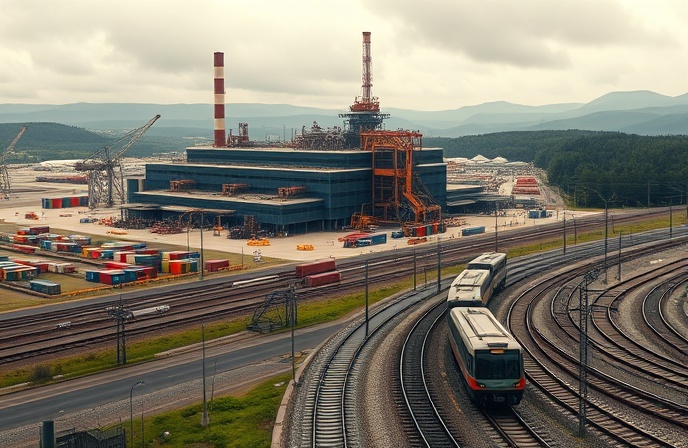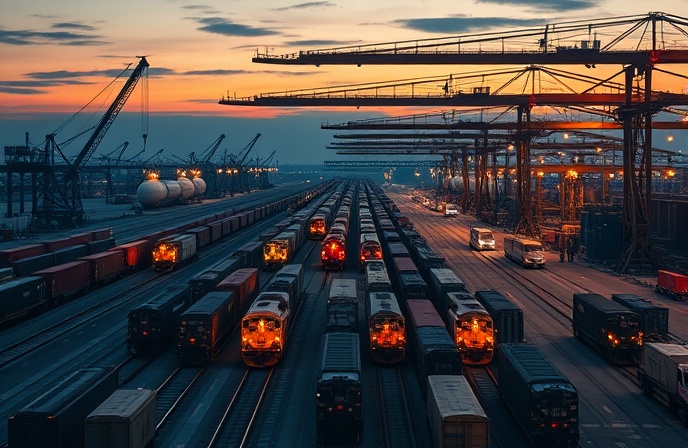US Rail: Tariffs, Tech & Resilience for Railway Infrastructure
Rising trade barriers impact the industrial sector. **Railway** operators must adapt by embracing automation and resilient supply chains. Explore strategies for navigating these **logistics** challenges.

“`html
Introduction
In the latter half of 2025, the global industrials sector faces significant strain, driven by rising trade barriers, including a 10% baseline tariff on most imports in the United States, with additional duties on strategic sectors and punitive rates on some goods of Chinese origin. This challenging environment necessitates a resilient response from operators, investors, and stakeholders.
Main Content
The Impact of Trade Barriers
The United States has implemented substantial tariff increases, with a 10% baseline covering most imports. Strategic sectors such as steel, aluminum, and foreign-made cars face an extra 25% duty. Furthermore, some goods originating from China are subject to rates of 145% or more. These measures have negatively impacted business confidence, with a recent GlobalData survey revealing that 57% of executives are “very concerned” and 61% anticipate tariffs will damage their 12-month outlook.
Rewiring Supply Chains
Tariff risks and geopolitical fractures are pushing companies towards localization, especially in strategic categories such as semiconductors, EV batteries, and defense components. Reshoring and “friendshoring” are becoming key strategies in industrial site planning. Companies are diversifying away from single-country dependencies, building regional footprints across Central America, Eastern Europe, and Southeast Asia. Final assembly is increasingly kept domestic while sourcing is spread across multiple suppliers to hedge risk. Technology is crucial in facilitating this shift, with AI-driven demand forecasting, logistics automation, and IoT-enabled monitoring providing real-time visibility and coordination. In the US, some automakers are ramping up domestic production, while others are rerouting shipments or dealing with tariffs.
Automation as a Key Strategy
Industrials are responding to tariff volatility by adopting dual sourcing, regionalized warehousing, and more resilient structures. Automation is playing a key role in mitigating costs. Digital tools help by raising throughput and trimming unit costs, while predictive analytics and diversified sourcing can reduce disruption impacts by 20–30%. Digital twins are improving asset utilization by 10–20% through more accurate optimization and scenario planning. IoT-driven predictive maintenance is slashing unplanned downtime by as much as half. Companies with diversified, technology-enabled supply chains are commanding 20–30% valuation premiums compared with their single-sourced peers.
ESG Integration and Decarbonization
Industrial firms are integrating sustainability into their operational strategies. Companies that tie credible net-zero roadmaps to operational efficiency are securing favorable contract terms and entering new sustainability-led customer segments. AI forecasting cuts overproduction and energy peaks, while digital twins improve efficiency at the design stage. In aerospace and defense, Scope 3 emissions are significant, necessitating sustainable aviation fuel and alternative propulsion. Construction firms are promoting low-carbon materials and electrified fleets. Automakers are blending electrification with circularity, with battery recycling and material recovery moving from pilot projects to core operations. The EU is expanding mandatory reporting requirements and sharpening emissions pricing, increasing the cost of inaction for firms.
Conclusion
Industrial leaders must navigate disruption by diversifying regional hubs, embedding automation, and integrating sustainability. AI-driven planning, IoT-enabled visibility, digital twins, and predictive maintenance are essential. Companies that anchor regionalized supply chains in modern, data-rich factories and embed circularity will be best positioned for the future.
“`



